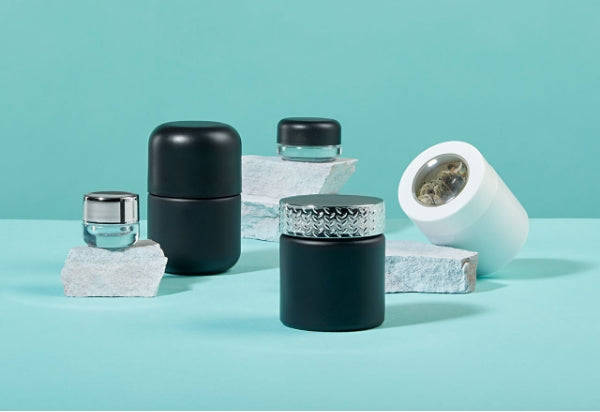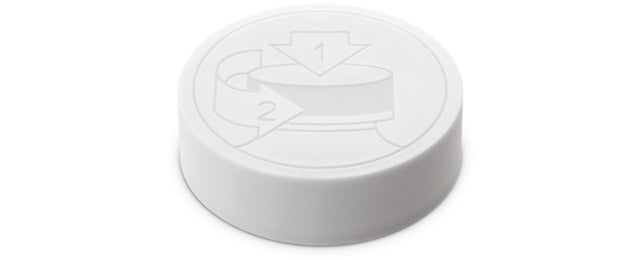The Consumer Product Safety Commission (CPSC) has determined that a hazard to children is posed by the packaging of the following substances and that special packaging is required to protect children from serious personal injury or illness resulting from handling, using, or ingesting these substances:
- Aspirin.
- Furniture polish. Nonemulsion type liquid furniture polishes containing 10 percent or more of mineral seal oil and/or other petroleum distillates and having a viscosity of less than 100 Saybolt universal seconds at 100° F.
- Methyl salicylate. Liquid preparations containing more than 5 percent by weight of methyl salicylate.
- ontrolled drugs. Any preparation for human use that consists in whole or in part of any substance subject to control under the Comprehensive Drug Abuse Prevention and Control Act of 1970 (21 U.S.C. 801 et seq.) and that is in a dosage form intended for oral administration.
- Sodium and/or potassium hydroxide. Household substances in dry forms such as granules, powder, and flakes, containing 10 percent or more by weight of free or chemically unneutralized sodium and/or potassium hydroxide, and all other household substances containing 2 percent or more by weight of free or chemically unneutralized sodium and/or potassium hydroxide.
- Turpentine. Household substances in liquid form containing 10 percent or more by weight of turpentine.
- Kindling and/or illuminating preparations. Prepackaged liquid kindling and/or illuminating preparations, such as cigarette lighter fuel, charcoal lighter fuel, camping equipment fuel, torch fuel, and fuel for decorative or functional lanterns, which contain 10 percent or more by weight of petroleum distillates and have a viscosity of less than 100 Saybolt universal seconds at 100 °F.
- Methyl alcohol (methanol). Household substances in liquid form containing 4 percent or more by weight of methyl alcohol (methanol).
- Sulfuric acid. Household substanes containing 10 percent or more by weight of sulfuric acid, except such substances in wet-cell storage batteries.
- Prescription drugs. Any drug for human use that is in a dosage form intended for oral administration and that is required by Federal law to be dispensed only by or upon an oral or written prescription of a practitioner licensed by law to administer such drug.
* multiple exceptions exist, see regulation for specific examples. - Ethylene glycol. Household substances in liquid form containing 10 percent or more by weight of ethylene glycol, except those articles exempted by 16 CFR 1500.83.
- Iron-containing drugs. With the exception of: (i) Animal feeds used as vehicles for the administration of drugs, and (ii) those preparations in which iron is present solely as a colorant, noninjectable animal and human drugs providing iron for therapeutic or prophylactic purposes, and containing a total amount of elemental iron, from any source, in a single package, equivalent to 250 mg or more elemental iron in a concentration of 0.025 percent or more on a weight to volume basis for liquids and 0.025 percent or more on a weight to volume basis for liquids and 0.05 percent or more on a weight-to-weight basis for nonliquids.
- Dietary supplements containing iron. Dietary supplements, as defined in § 1700.1(a)(3), that contain an equivalent of 250 mg or more of elemental iron, from any source, in a single package in concentrations of 0.025 percent or more on a weight-to-volume basis for liquids and 0.05 percent or more on a weight-to-weight basis for nonliquids.
- Solvents for paint or other similar surface-coating material. Prepackaged liquid solvents (such as removers, thinners, brush cleaners, etc.) for paints or other similar surface-coating materials (such as varnishes and lacquers), that contain 10 percent or more by weight of benzene (also known as benzol), toluene (also known as toluol), xylene (alsoknown as xylol), petroleum distillates (such as gasoline, kerosene, mineral seal oil, mineral spirits, naphtha, and Stoddard solvent, etc.), or combinations thereof, and that have a viscosity of less than 100 Saybolt universal seconds at 100° F.
- Acetaminophen. Preparations for human use in a dosage form intended for oral administration and containing in a single package a total of more than one gram acetaminophen.
- Diphenhydramine. Preparations for human use in a dosage form intended for oral administration and containing more than the equivalent of 66 mg diphenhydramine base in a single package.
- Glue removers containing acetonitrile. Household glue removers in a liquid form containing more than 500 mg of acetonitrile in a single container.
- Permanent wave neutralizers containing sodium bromate or potassium bromate. Home permanent wave neutralizers, in a liquid form, containing in a single container more than 600 mg of sodium bromate or more than 50 mg of potassium bromate.
- Ibuprofen. Ibuprofen preparations for human use in a dosage form intended for oral administration and containing one gram (1,000 mg) or more of ibuprofen in a single package.
- Loperamide. Preparations for human use in a dosage form intended for oral administration and containing more than 0.045 mg of loperamide in a single package (i.e., retail unit).
- Mouthwash. Mouthwash preparations for human use and containing 3 g or more of ethanol in a single package.
Mouthwash products with nonremovable pump dispensers that contain at least 7% on a weight-to-weight basis of mint or cinnamon flavoring oils, that dispense no more than 0.03 grams of absolute ethanol per pump actuation, and that contain less than 15 grams of ethanol in a single unit are exempt from this requirement.
The term "mouthwash" includes liquid products that are variously called mouthwashes, mouth rinses, oral antiseptics, gargles, fluoride rinses, anti-plaque rinses, and breath fresheners.
It does not include throat sprays or aerosol breath fresheners. - Lidocaine. Products containing more than 5.0 mg of lidocaine in a single package.
- Dibucaine. Products containing more than 0.5 mg of dibucaine in a single package.
- Naproxen. Naproxen preparations for human use and containing the equivalent of 250 mg or more of naproxen in a single retail package
- Ketoprofen. Ketoprofen preparations for human use and containing more than 50 mg of ketoprofen in a single retail package.
- Fluoride. Household substances containing more than the equivalent of 50 milligrams of elemental fluoride per package and more than the equivalent of 0.5 percent elemental fluoride on a weight-to-volume basis for liquids or a weight-to-weight basis for non-liquids.
- Minoxidil. Minoxidil preparations for human use and containing more than 14 mg of minoxidil in a single retail package.
- Methacrylic acid. Liquid household products containing more than 5 percent methacrylic acid (weight-to-volume) in a single retail package Products applied by an absorbent material contained inside a dispenser (such as a pen-like marker) are exempt from this requirement provided that: (i) the methacrylic acid is contained by the absorbent material so that no free liquid is within the device, and (ii) under any reasonably foreseeable conditions of use the methacrylic acid will emerge only through the tip of the device.
- Over-the-Counter Drug Products. (i) Any over-the-counter (OTC) drug product in a dosage form intended for oral administration that contains any active ingredient that was previously available for oral administration only by prescription.
- Hazardous substances containing low-viscosity hydrocarbons. All prepackaged nonemulsion-type liquid household chemical products that are hazardous substances as defined in the Federal Hazardous Substances Act (FHSA) (15 U.S.C. 1261(f)), and that contain 10 percent or more hydrocarbons by weight and have a viscosity of less than 100 SUS at 100° F.
- Drugs and cosmetics containing low-viscosity hydrocarbons. All prepackaged nonemulsion-type liquid household chemical products that are drugs or cosmetics as defined in the Federal Food, Drug, and Cosmetics Act (FDCA) (21 U.S.C. 321(a)), and that contain 10 percent or more hydrocarbons by weight and have a viscosity of less than 100 SUS at 100° F.
POISON PREVENTION PACKAGING STANDARDS.
To protect children from serious personal injury or serious illness resulting from handling, using, or ingesting household substances, the Commission has determined that packaging designed and constructed to meet the following standards shall be regarded as "special packaging"
(a) General requirements. The special packaging must continue to function with the effectiveness specifications set forth in paragraph(b) of this section when in actual contact with the substance contained therein. This requirement may be satisfied by appropriate scientific evaluation of the compatibility of the substance with the special packaging to determine that the chemical and physical characteristics of the substance will not compromise or interfere with the proper functioning of the special packaging.
The special packaging must also continue to function with the effectiveness specifications set forth in paragraph (b) of this section for the number of openings and closings customary for its size and contents. This requirement may be satisfied by appropriate technical evaluation based on physical wear and stress factors, force required for activation, and other such relevant factors which establish that, for the duration of normal use, the effectiveness specifications of the packaging would not be expected to lessen.
Special packaging, tested by the method described in § 1700.20, shall meet the following specifications:
(1) Child-resistant effectiveness of not less than 85 percent without a demonstration and not less than 80 percent after a demonstration of the proper means of opening such special packaging. In the case of unit packaging, child-resistant effectiveness of not less than 80 percent.
(2) Ease of adult opening. (i) Senior- adult test shall have a senior adult use effectiveness of not less than 90% for the senior-adult panel test.

